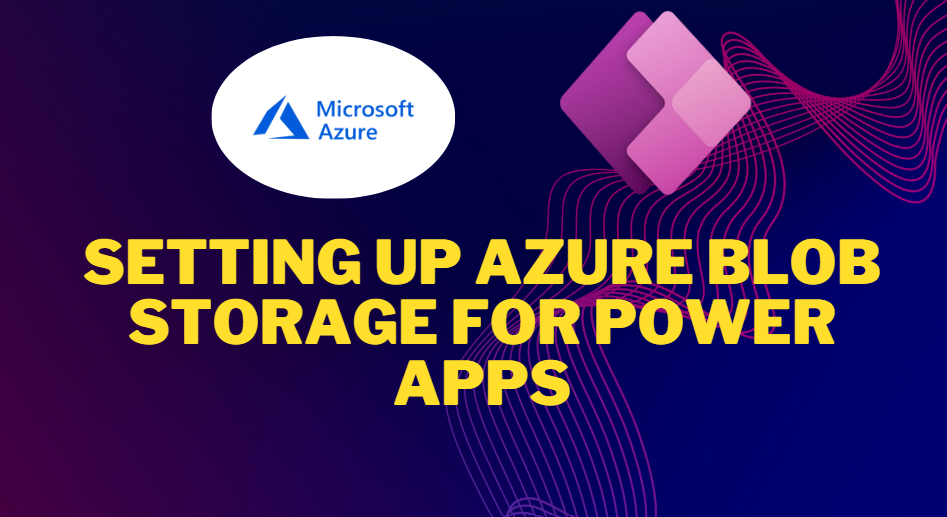Setting up Azure Blob Storage for Power Apps involves a series of steps to create and configure the storage account. Here is a step-by-step guide to help you set up Azure Blob Storage for Power Apps:
Step 1: Sign in to the Azure Portal To begin, sign in to the Azure portal using your Microsoft account or organizational credentials. Once you’re logged in, you’ll have access to the Azure services and resources.
Step 2: Create a new storage account In the Azure portal, navigate to the “Storage accounts” section and click on the “Add” button to create a new storage account. Provide the required details such as subscription, resource group, and storage account name. Select the desired location for your storage account and choose the storage account type (Standard or Premium) based on your requirements.
Step 3: Configure the storage account settings After creating the storage account, you need to configure some essential settings. Choose the desired performance and redundancy options based on your application needs. You can select the access tier for your data, such as hot, cool, or archive, depending on how frequently you need to access the stored files.
Step 4: Create a container Once the storage account is created, you need to create a container to store your files. A container is a logical unit within the storage account that groups related files together. In the storage account overview, go to the “Containers” section and click on the “Container” button to create a new container. Provide a name for the container and set the access level (private, blob, container, or public).
Step 5: Obtain the connection string To integrate Azure Blob Storage with Power Apps, you need to obtain the connection string for your storage account. In the Azure portal, navigate to the storage account overview page and click on the “Access keys” section. Here, you can find the connection string for your storage account. Copy the connection string, as you will need it later in Power Apps.
Step 6: Open Power Apps Now, open Power Apps in the browser or the Power Apps studio on your desktop. You can use your Microsoft account or organizational credentials to sign in to Power Apps.
Step 7: Create a new app or open an existing app In Power Apps, you can create a new app from scratch or open an existing app to integrate with Azure Blob Storage. Choose the appropriate option based on your requirements.
Step 8: Add the Azure Blob Storage connector In the Power Apps studio, go to the “Data” tab and click on the “Add data source” button. From the list of available connectors, select the “Azure Blob Storage” connector. This will add the connector to your app, allowing you to interact with Azure Blob Storage.
Step 9: Configure the Azure Blob Storage connector After adding the Azure Blob Storage connector, you need to configure it with the connection string obtained earlier. In the connector settings, enter the storage account name, access key, and container name that you created in Azure Blob Storage. Save the configuration.
Step 10: Implement Blob Storage operations With the Azure Blob Storage connector configured, you can now implement various operations in your Power App. For example, you can create functionality to upload files to Blob Storage, download files, or delete files. Use the appropriate actions and functions provided by the Azure Blob Storage connector to perform these operations.
Step 11: Test and publish the Power App Once you’ve implemented the desired Blob Storage operations in your Power App, it’s important to test the app thoroughly. Use the Power Apps preview feature to test the app on different devices and ensure the Blob Storage integration is working as expected. Once you’re satisfied with the app’s functionality, publish and deploy it to the desired environment, such as the Power Apps

